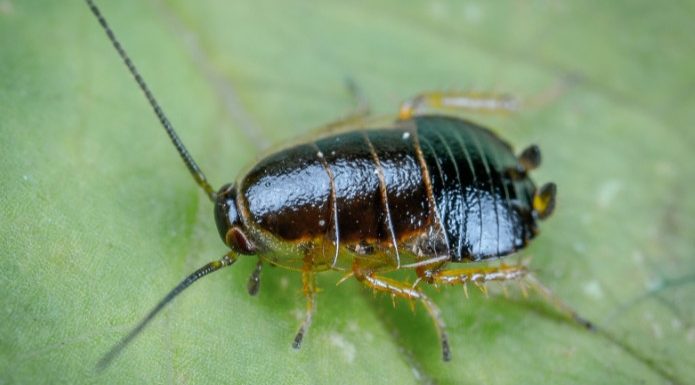
In this article we are going to learn how to control cockroaches. Though cockroaches are often associated with unsanitary living conditions, such conditions are not necessarily a prerequisite for a cockroach infestation.
Cockroaches do like rotting food and vegetables, but they also feed on wallpaper paste, glue, paint, and even soap. Cockroaches can also spread salmonella and E. coli bacteria onto dishes, countertops, and any other surfaces that they come into contact with.
Table of Contents
Signs of a Cockroach Problem
If you turn on the light at night and see one or more cockroaches running for cover, you likely have a cockroach problem. In addition, brown specks of excrement accompanied by a funny odor are another indicator of a potential infestation. If the infestation is severe, you may even hear scuttling of cockroaches in the walls.
Exclusion, Sanitation, and Habitat Modification
- Food storage: Cockroaches like carbohydrates, so store rice, grains, vegetables, sweets, and other starchy foods in sealable rubber containers.
- Trash storage: Buy trash cans with tight-fitting lids, and take your trash out as often as possible.
- Cleaning: If you spill any liquid or food on the floor, clean it up immediately.
- Moisture control: Keep your sinks dry, and clean your drains often. Cockroaches are attracted to moisture: wiping up excess water and putting dishes away after you clean them will help keep your sink and counters free of thirsty cockroaches.
- Bleach: A little bit of bleach can go a long way toward ridding your home of cockroaches. Cockroaches often are attracted to bits of food left over in drains. Pouring a little bleach down your drains will discourage cockroaches from using them as a food source.
Chemical Control
If you want to solve your cockroach problem immediately, there are few chemical solutions to consider:
- Boric acid dust: Boric acid (borax) works well on cockroaches because they don’t avoid it as much as they do other insecticides. Fill a plastic squeeze bottle with boric acid dust, and squeeze it into drains, under stoves and counters, and in any other cracks or crevices where you’ve noticed roaches hiding. Because borax is non-toxic, it’s the safest form of chemical roach control for homes with young children and pets.
- Silica gel: A dessicant, or drying agent, that helps absorb moisture in packaged food, silica gel also works against cockroaches. When a cockroach comes into contact with silica gel, it gets dehydrated, often fatally so. You can find silica gel in most grocery stores and hardware stores. Use a plastic squeeze bottle to spread it under stoves and ovens, on counters, and in cracks. Two major brands of products containing silica gel are Drione® and Revenge®.
- Roach motels and roach baits: The most effective baits are made by Maxforce® and Combat® and contain hydramethylnon, a chemical that is categorized by the EPA as “slightly toxic.” These baits are most effective when placed near sinks, under counters and stoves, and in other places where roaches tend to forage for food or water.
If a cockroach infestation persists even after you’ve tried these chemical solutions, it may be time to have a licensed professional perform an inspection and apply special sprays.
Keeping Cockroaches Away
Keeping cockroaches away requires that you keep your home clean and well-sealed.
- Windows and doors: Make sure that windows are sealed tight and that screens are tightly fitted. Bandage torn window screens with tape until you or your landlord can replace them. Also make sure that your doors seal properly and that any mechanisms used to pull them shut work properly.
- Vents: Cover dryer vents and bathroom vents with screens to prevent cockroaches from coming inside. Cockroaches can fly, so be sure to cover all vents with screens to reduce the chances of infestation.
- Caulking: Seal any cracks in walls and siding with caulk to reduce hiding places or entryways for cockroaches.
- Bleach: Use bleach or a bleach substitute to clean floors and countertops, and vacuum under counters and ovens where food may be dropped.


